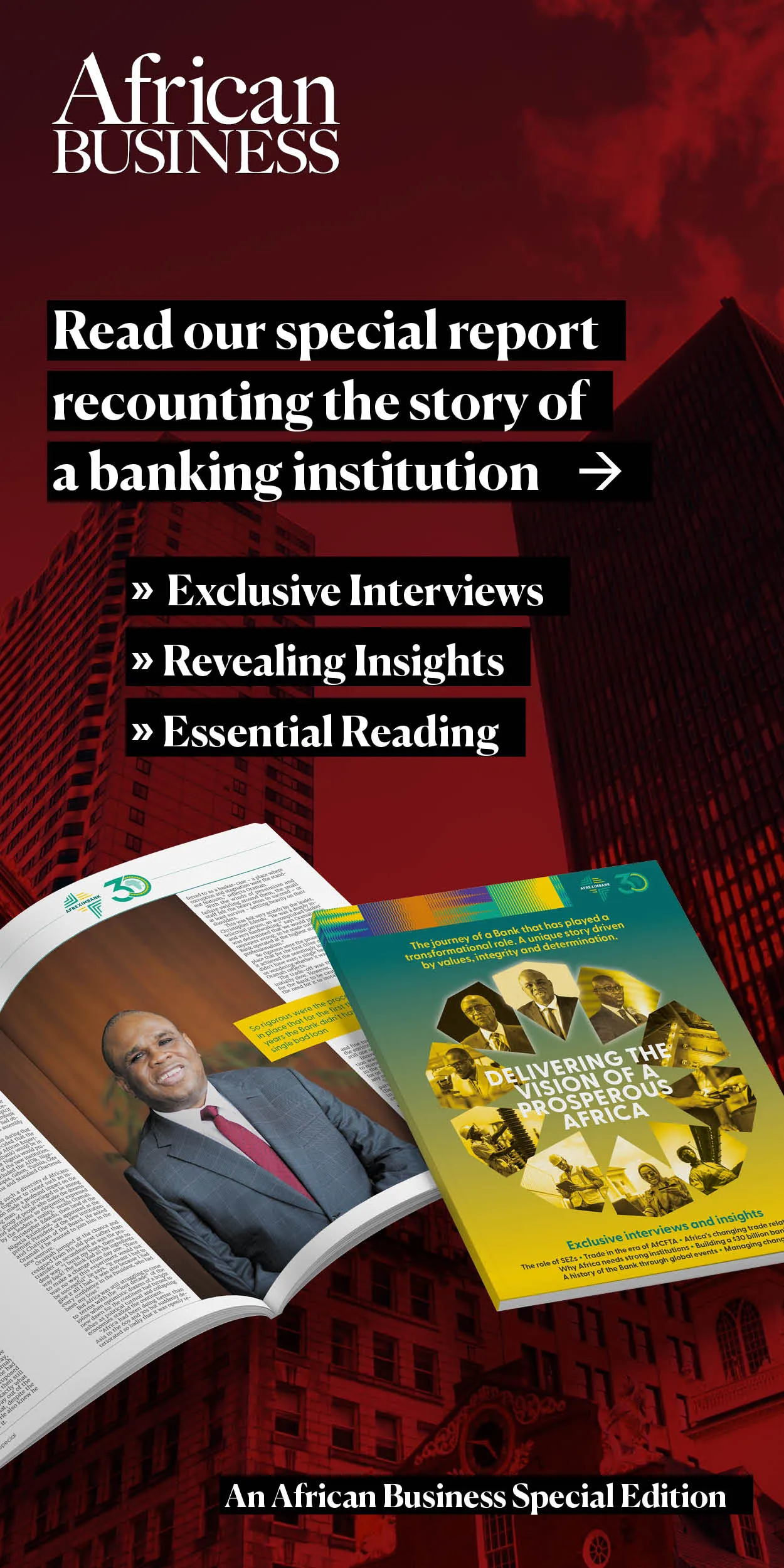This article was produced with the support of Afreximbank
Limited levels of intra-African trade have long been cited as one of the main causes of constrained economic growth across much of the African continent. While traditional metrics often overlook the considerable volume of unofficial cross-border trade, there is no doubt that internal trade levels are far lower in Africa at 17% than in Europe or Asia, for example where the average is around 60%.
The colonial era development of African economies is partly to blame, with infrastructure generally designed to move commodities from specific territories to markets outside Africa, with many roads and railways stopping short of crossing into neighbouring African states.
Such infrastructural shortcomings need to be overcome but trade tariffs and non-tariff barriers have perhaps even more of an impact.
The share of intra-African exports as a percentage of total African exports increased slowly from around 10% in 1995 to about 17% in 2017 but there was a consensus that something drastic had to change given that the figure for Asia in 2020 was 58%.
The African Continental Free Trade Area (AfCFTA) has therefore been devised to help erode such barriers and create the world’s biggest market by number of countries involved. The AfCFTA came into force at the start of 2021 but creating a genuine single market will be a long process, with national tariff and regulatory policies gradually harmonised over time.
The combined GDP of the 54 countries who have already joined it – only Eritrea is yet to commit – is just $3.6 trillion, about the same as that of Germany, but it is hoped that the free trade area will help drive that figure up.
Moreover, the area’s current population of 1.4bn is forecast to reach 2.5bn by the middle of this century, creating an enormous single market if the AfCFTA is developed as planned.
As might be expected from an organisation that was created to promote and finance both extra- and intra-African trade, Afreximbank has played a key role in creating AfCFTA and actually making it a reality on the ground.
Creation of PAPSS
Under its most recent five year strategy, Afreximbank greatly increased its financing in support of intra-African trade. It supports the free trade area through direct funding, helping to leverage additional financing and reducing transaction costs through the use of new technology. One of Afreximbank’s biggest contributions has been the creation of the Pan-African Payment and Settlement System (PAPSS).
Launched in September 2021, the Pan-African platform for processing, clearing and settling intra-African payments allows individuals, businesses and governments to make instant payments in more than 40 different African currencies, reducing the cost of trade and demand for US dollars and other hard currency.
Afreximbank President Benedict Oramah, who is also Chairperson of the PAPSS Management Board, commented: “With the implementation of PAPSS, Africa can expect to begin to reap the fruits of the African Continental Free Trade Agreement… PAPSS is not positioned to replace existing regional and national payment systems but to collaborate and work with them in better integrating African economies for the benefit of all.”
Afreximbank provided $500m to finance the successful PAPSS pilot project held in the West African Monetary Zone and helped fund its rollout across the continent. It also acts as the main settlement agent, providing settlement guarantees and working with regional organisations, such as the West Africa Monetary Institute, to promote the use of PAPSS.
It is hoped that the 500-600 banks operating in Africa will all eventually make use of the system and Afreximbank Chief Economist Hippolyte Fofack has called on them to support the AfCFTA by providing long term loans to African manufacturers, in the automotive, steel and rail industries in particular.
The International Chamber of Commerce estimates the annual African trade financing gap at $110–120bn, partly because less than 20% of African bank-intermediated trade finance is directed at intra-African trade.
As a result, Afreximbank has sought to fill the gap, including by setting up the Intra-African Trade Initiative to support intraregional exchange and offering new uncommitted short term revolving trade finance facilities under the Afreximbank Trade Facilitation Programme (AFTRAF). Afreximbank’s intra-African trade financing is on course to reach $40bn on a revolving basis by 2026.
AfCFTA Adjustment Fund
Afreximbank has set up a $1bn facility to operationalise the AfCFTA Adjustment Funds, consisting of the Base Fund, General Fund and Credit Fund.
It has also provided $10m as a seed grant to the funds, which will require investment of $10bn in total. Oramah commented: “Afreximbank is delighted to have been appointed the fund manager of the AfCFTA Adjustment Funds following the extensive collaborative work it has done with the AfCFTA Secretariat and the Africa Union Commission during the past few years….These facilities will again be contributing to making a great idea a reality.”
The Adjustment Funds are designed to help countries implement agreed protocols and support African companies in retooling for effective participation in the new trading regime.
They also aim to mitigate the negative impact of reduced tariffs on national governments, address infrastructure deficits and ease supply chain bottlenecks.
They are to be managed by the Fund for Export Development in Africa (FEDA), the impact investment arm of Afreximbank, which is headquartered in Kigali, following the signing of a host country agreement between Afreximbank and the Rwandan government in March 2023.
The automotive sector
Afreximbank has identified specific industries for support that can not only drive continental economic integration in themselves but also wider development through the benefits of agglomeration. Chief among these is the automotive industry, as the continent already has almost all of the raw material needed to manufacture motor vehicles, as well as growing markets for cars, but is hugely reliant on imports, which in turn is a big drain on foreign exchange.
At present, there is substantial manufacturing activity in South Africa and pockets of North Africa but production elsewhere is limited, so the continent as a whole accounts for just under 1% of global automotive manufacturing capacity.
However, this is exactly the kind of industry that could create the high skilled employment needed to propel African economic growth, while creating cross-continental supply chains that could fuel intra-African trade.

 Sign in with Google
Sign in with Google 
